Fudd Friday: Top Slug Hunting Shotguns For 2025

Yeah, yeah, we heard the news: Straight wall cartridges are replacing shotgun slugs in hunting areas. But some people still are legally required to use a shotgun with slugs during deer season, and some people still prefer slugs anyway. After all, there’s a lot to be said for biffing a 1-ounce chunk of lead at a deer at 1600 fps. The good news is, if this is what you want, there are still several very good slug guns available on the U.S. market, purpose-built for using either Foster slugs or modern sabot-style slugs.
Slug Guns & Ammunition @ TFB:
Wait? What’s the difference?
Foster slugs are made of soft lead and are roughly the same diameter as your shotgun barrel, just like a rifle bullet is roughly the same diameter as your rifle barrel. They are made to work with most shotgun chokes, including full choke (but you probably don’t want to shoot slugs through an extra-full choke).
When you see a Foster slug, it looks like there’s rifling on the slug’s exterior; that’s actually swaging, soft lead that compresses to stabilize the slug and allow it to easily fit down the barrel. Foster slugs are usually shot from smoothbore barrels, and accuracy tends to fall apart after the 50-yard mark as the heavy chunk of lead slows down. Having said that, some shotguns will push Foster slugs to longer ranges with decent accuracy, and inside the 50-yard mark, many shotguns—even long-barreled duck guns with a bead sight—will shoot Foster slugs well enough for most hunting purposes.
Sabot slugs are smaller in diameter than the barrel; a sabot (usually plastic) stabilizes them as they travel down the bore. The sabot falls away when the slug exits the muzzle, leaving the smaller-diameter slug continuing towards the target. Sabot slugs are generally faster than Foster slugs, and they work better with rifled shotgun barrels.
A well-tuned sabot load can turn a rifled shotgun into a medium-range killing machine, knocking down deer at 150 or even 200 yards. Because of the sabot construction, these slugs can be made of harder metal than lead, as the sabot protects the bore. Sabot slugs are more expensive than Foster slugs, but most serious shotgun hunters find the improved performance worth it.
There are other styles of slugs (Brenneke slugs, wad slugs), but Foster slugs and sabot slugs are the most common in North America.
Top slug gun choices for 2025
Despite the popularity of straight-wall cartridges, several OEMs are still selling excellent slug guns in 2025. Here are a few good choices, if you’re looking to buy:
Mossberg pump-actions
Mossberg has many configurations of its Model 500 pump-action (and the closely related Model 835); some come ready for the deer woods. You can buy the Slugster, which is specifically built for deer hunting with adjustable rifle sights on a 24-inch barrel. Add a scope mount if you want an optic. MSRP is a reasonable $533. Currently, the Slugster is available in 12 or 20 gauge. Remember, a 20-gauge sabot slug will hit just as hard as a 12-gauge, generally speaking, with less recoil. There’s also a Bantam Slugster chambered in .410, presumably for youth hunters.
If you look into Mossberg’s shotguns that are available with combo barrels, most of these are available with rifled barrels, with cantilever optic mounts. These are some of the best deals available for any starting-out hunters, covering fur and feathers both with a single purchase.
Savage bolt-actions
Savage took its Model 110 bolt action and beefed it up for slug gun hunting with the Model 210 and 220. These look just like their deer rifles, except for a heavier barrel and a magazine that protrudes from the stock below the action. They have many of the same features as Savage’s deer rifles, including AccuTrigger, adjustable AccuStock and a choice of left-hand or right-hand configuration. They have no iron sights; these shotguns are drilled and tapped from the factory, as their buyers will want to install scopes to take advantage of their long-range capability.
The 22-inch barrel on these models is button-rifled, and the Savages are considered some of the most accurate slug guns on the market. They’re available in 20 gauge or 12 gauge; MSRP ranges from $719 to $989, depending on which configuration you buy. More details here.
Henry break-actions
Years ago, H&R’s break-action 20-gauge single-shots were the best bang for the buck in the slug gun world. Today, H&R hasn’t made slug guns for quite some time, but Henry makes the equivalent, and it’s much nicer.
The Henry Single Shot Slug Barrel Shotgun comes with a rifled 24-inch barrel (with 1:35 twist) and an old-school break-action mechanism. Iron sights are standard if you want to keep things old-school; the gun is drilled and tapped for a Weaver mount if you want a scope. The walnut stock ends at a buttpad that cuts recoil. It’s a simple shotgun that recalls the days when every farm in North America had an old “crack barrel” gun behind the porch door. For now, it’s only available in 12 gauge, at an MSRP of $636. See more info here.
Winchester semi-autos
The Winchester SX4 Cantilever Buck comes ready to hunt with adjustable iron sights, although most buyers will take advantage of the cantilever scope mount to add an optic. A gas-operated action means some of the excessive recoil that’s common to slug guns will be bled off. Available in 12 gauge or 20 gauge, both with a rifled 22-inch barrel.
The MSRP for this setup is $1,269.99, but if you want a semi-auto slug gun, there aren’t many others to pick from, unless you want to use a tactical shotgun for hunting (and there’s nothing wrong with that—many of the features on a tactical shotgun also make it useful on a deer stand).
Honorable mention - Ithaca Deerslayer II
You might have noticed that all the shotguns listed so far have rifled barrels. This is because they’re set up to take advantage of the accuracy potential of sabot slugs; Foster slugs are typically used in smoothbore barrels, by people who want to recycle a bird gun and use it in deer season.
But if you want to shoot Foster slugs and you want a gun that was built to shoot them, the Ithaca Deerslayer II is built for the job. These bottom-eject pump guns have been changed very, very little since their introduction in 1959, when Ithaca made the first purpose-built shotgun for deer hunting. They are now available in 12 gauge or 20 gauge, with Grade A, AA or AAA walnut stocks. In other words, they’re built the way they used to be. That means they even have a smoothbore 24-inch barrel, ideal for Foster slugs, with iron sights on top (and they’re drilled and tapped for scope mounts if you wish). That kind of old-school construction gets expensive, though; the Deerslayer II has an MSRP of $1,199.00 – $1,749.00. See more details here.















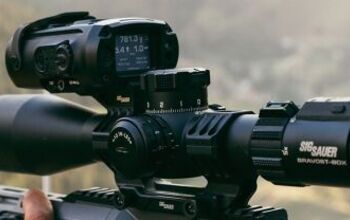



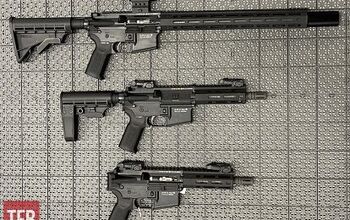

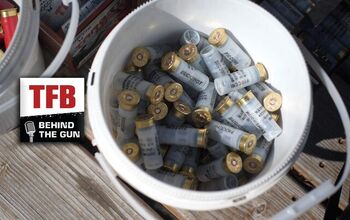

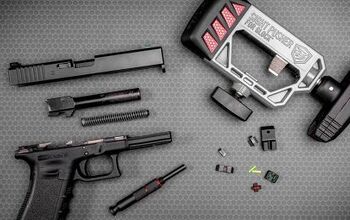
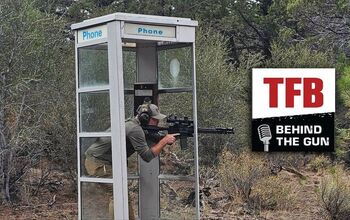

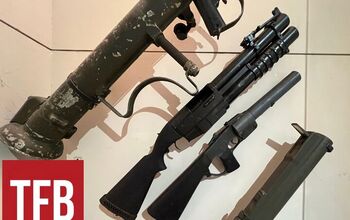
Comments
Join the conversation
or a SxS with double aught buckshot